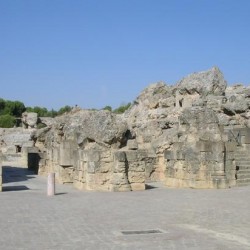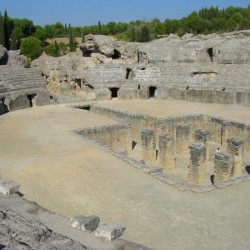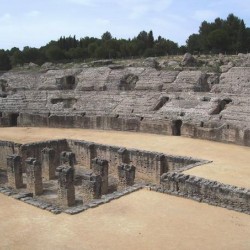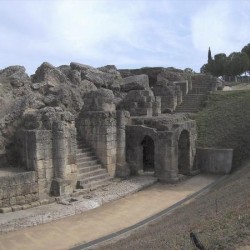Italica, Amphitheater
Italica: Roman colony in western Andalusia, not far from Seville. Its amphitheater is one of its best-preserved monuments.

The amphitheater, Italica's main monument, was directly to the north of the town, outside the wall. It could accommodate 20,000-25,000 people, which is a ridiculous number, because there were probably never more than 10,000 people living in Italica (cf. Pompeii, which had about 15,000 people within its walls, and 15,000 on the land). The solution to this puzzle may be that visitors arrived from nearby Hispalis (Seville). It has been argued that gladiatorial fights and hunts were more popular in Andalusia than in Italy. (It is tempting to connect this with the popularity of bull fights in modern Spain.)
The amphitheater of Italica is very well-preserved. You can still recognize the stairs on the outside, which made it possible to reach the upper seats, and several structures in the center of the arena. Among these were elevators, which were once used to bring wild animals into the arena, where they could be killed by hunters.

In the amphitheater, an interesting votive offering was discovered: a slab of marble with two pair of feet - obviously the part of the body that had been cured -, dedicated to Juno Caelestis, a goddess who was originally from Carthage. This is now in Seville's Museo Arqueológico.
 Italica, Amphitheater, Entrance |
 Italica, Amphitheater, Arena |
 Italica, Amphitheater, Arena |
 Italica, Amphitheater, Entrance |